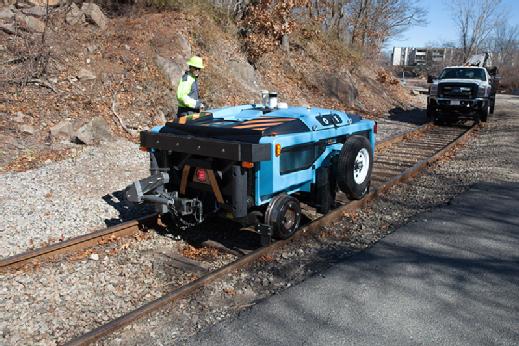The world envisioned by Jonathan Foucheaux is like the start to a common joke: A football fan walks up to the bar.
But here’s where the story changes. Instead of the awkward punchline, Foucheaux’s events management company, Solomon Group, can deliver a personal experience — flashing up-to-the-second scores from the fan’s favorite teams on a TV screen or changing an electronic background to the colors of the fan’s favorite team’s colors.
“Our idea is tokenizing people at events to learn as much as possible about them, so we can personalize the experience,” said Foucheaux, partner and co-founder of the New Orleans-based Solomon Group.
To do that, Solomon Group is harnessing the various technologies that, combined, make up the internet of things (IoT). As such, it’s one of the companies beginning to differentiate themselves in today’s economy by providing products and services that without IoT would be impossible to deliver.
These digital companies are using IoT to drive new revenue, and not just to gain operational efficiencies — something that had been the primary ROI in many early IoT initiatives.
Executives are taking note of this new IoT business model. The “State of the Market: Internet of Things 2016” report, commissioned by Verizon and researched by Oxford Economics, found that revenue growth represented the biggest factor driving IoT adoption. In fact, 72% of organizations said IoT is critical for creating a competitive advantage.
‘Not the traditional IoT application’
 Jonathan Foucheaux
Jonathan FoucheauxSolomon Group first deployed an IoT solution to ensure that the number of people attending an event at a convention center did not exceed the building’s capacity. The aim was to track in real time when attendees left, so others could enter. The company used optical turnstiles equipped with sensors that monitored foot traffic coming in and out of gates, with applications processing and presenting the data.
After that early success, Foucheaux said his 8-year-old company continues to develop its IoT business model. It’s now issuing RFID-enabled wristbands that tie in with applications where attendees can enter information about themselves, allowing the company to better target and personalize each attendee’s experience.
That’s not the traditional IoT application, it’s a little off the wall, but that’s the world we live in. We always say we’re looking for the next idea. Jonathan Foucheauxpartner and co-founder, Solomon Group
Using the personal data the attendee submits, Foucheaux said his company can help event organizers (who hire Solomon Group to run events) also offer more interactive experiences. At a sporting event, for example, that data can be integrated with other systems and connected to the RFID-enabled wristbands, so when an attendee stops at a picture booth for a photo, the background can change to his or her favorite team automatically. That photo then can post to the attendee’s social media feed automatically.
“That’s not the traditional IoT application, it’s a little off the wall, but that’s the world we live in. We always say we’re looking for the next idea,” Foucheaux said.
Confluence of factors drive new IoT business models
Solomon Group is not the only company looking for the next new IoT business model. Verizon’s “State of the Market: Internet of Things 2016” report finds that IoT will continue to be “deployed as a mainstream path to generating higher revenue.” The report specifically credits four key trends which have come to an inflection point in the past year — data monetization, core IoT networks and low power devices, platforms as a service, and investment in IoT startups — as creating a technology environment that’s favorable for harnessing IoT’s capabilities to drive revenues.
That’s the case with Breezie, a 6-year-old software company based in Pittsburgh.
Breezie sells a tablet interface specifically designed for senior citizens; the company sells this interface on a subscription basis, with most of its sales to senior care providers, approximately 70% of whom provide care to seniors in their own homes with the remainder providing care for seniors in residential care facilities.
 Jeh Kazimi
Jeh KazimiCEO and founder Jeh Kazimi said the interface is designed for simplicity and comes installed on Samsung devices, so that the platform is ready to use. He said the idea is to provide a product that can help seniors age in their own homes safely.
Making it easy for seniors to use the technology to connect with people, shop and access the internet for information is just the start, Kazimi said.
He explained that IoT allows Breezie to enable a whole other level of interaction — and knowledge. IoT, which ties the Breezie platform in with other technologies such as wearables and sensors, allows caregivers to check in on seniors. The IoT components also help seniors better navigate their homes by integrating with other systems, such as smart lights or smart personal assistants (like Amazon’s Alexa) to create safer, more responsive environments.
Meanwhile, machine learning and artificial intelligence (AI) work with the other IoT components to better understand context, so that its alerts do not result in false alarms. For example, a senior getting up in the middle of the night to Skype with a relative that recently moved halfway around the world would be recognized as different from unexplained middle-of-the night wanderings, which would trigger an alert to caregivers.
Such features aren’t just smart in the technical sense; they’re smart business, too, as Breezie charges extra for such IoT-enabled features.
IoT business model a constellation of technologies
Other organizations should take note of these new IoT business models. Andy Mulholland, vice president and principal analyst at Constellation Research, said companies need to find ways to capitalize on IoT if they want to survive the shift toward the digital economy.
But CIOs and other executives also need to understand that IoT isn’t a single technology, nor will an IoT initiative alone deliver results.
 Andy Mulholland
Andy MulhollandRather, an IoT business model becomes feasible when organizational leaders understand how to leverage all the multiple technologies working together to, first, create a real-time understanding of situations and, second, enable decisions based on that insight.
“You have to put everything together,” Mulholland said, pointing to the emerging idea of “business technology,” the term used to describe the use of cloud, apps, AI, services and the IoT technologies (dubbed CAAST) to enable digital enterprises.
RailPod, a Boston-based startup, is building its entire business by pulling these various technologies together to deliver what it sees as a better, more thorough approach to rail line inspections.
As it stands now, railroad companies generally inspect their rail lines using inspectors who examine the tracks on a twice-weekly schedule as well as more aggressive inspections once or twice a year with specialized equipment similar to a locomotive, explained RailPod CEO Brendan English.
 Brendan English
Brendan EnglishBut RailPod offers a robot as an alternative.
This robot, about the size of a golf cart, is operated by two buttons — an up-and-down button used to place it on the tracks and an on-off switch that connects to a platform on a ruggedized tablet, English said. Custom-built onboard sensors take in data as the robot moves along the track and feed it back to applications that also use data from the railroad company, government agencies such as the National Weather Service, and other sources. Algorithms analyze the data to provide insights about the rail line’s current conditions, data that can drive smarter decisions about where the company needs to invest its resources.
“The IoT play drastically simplifies how we aggregate data and how we present that data back,” English said, explaining that RailPod plans to move into predictive analytics in the near future.
English said RailPod uses, when it can, off-the-shelf capabilities, such as AWS for cloud and Cloud Technology Partners, to guide it through the process of building the system to work in the cloud. He said this allows RailPod’s team to focus on delivering the pieces of its business that aren’t commodities, namely the robot, the custom-built sensors and the purpose-built applications.
“We focus heavily on things that are new and unique,” he said, of his IoT business model. “Anyone jumping into IoT has to look at what someone else has done, and ask, ‘How do we get our hands on that and not replicate all that work?'”
It’s that maturity of the IoT technologies, English added, that drives his company forward.







